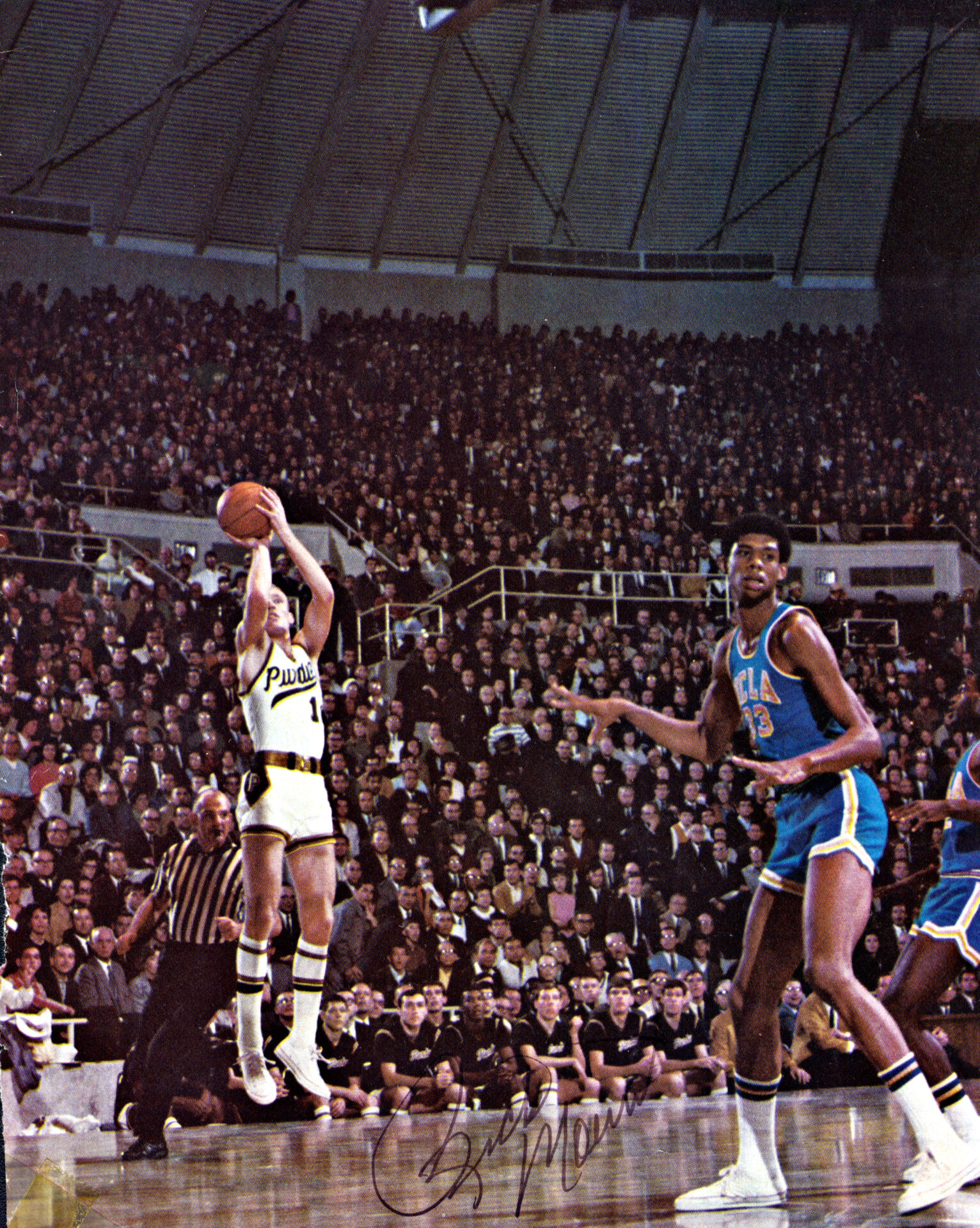Blog
Kenny Ponders Which Boilermakers Deserve to Have Their Number Retired



Ever since the New York Yankees honored the dying Lou Gehrig in 1939 by declaring no one would wear his No. 4 again, retiring uniform numbers has been seen as the ultimate tribute to an athlete.
More than 80 years later, the Yankees have strayed off the path of honoring all-time greats. Paul O’Neill is set to become the 23rd Yankees player to have his number (21) retired this summer. As a Cincinnati Reds fan, I’ll remember O’Neill fondly for his role with the 1990 World Series champions.
But Lou Gehrig he isn’t.
The Chicago Bears have retired 14 numbers during their rich history, the most of any NFL team.
Dick Butkus (51). Mike Ditka (89). Red Grange (77). Bronko Nagurski (3). Walter Payton (34). Gale Sayers (40). Names that immediately come to mind when thinking about all-time great Chicago Bears players.
The Monsters of the Midway even have their own Lou Gehrig. Brian Piccolo’s death in 1970 at the age of 26 from cancer was memorably depicted in the classic ABC movie “Brian’s Song” in 1971.
Purdue University officially doesn’t retire athletes’ numbers. Along the rafters of Mackey Arena, banners with the player’s name and number are displayed for the men’s and women’s basketball program’s consensus All-Americans and 2,000-point scorers.
Two numbers on display, Stretch Murphy’s 27 and Norm Cottom’s 7, are not available under today’s college basketball rules. No jerseys can begin or end with 6, 7, 8 and 9.
For the sake of argument, which men’s basketball numbers should be retired at Purdue?
Basketball record books at Purdue go back to 1950-51, so John Wooden wearing No. 13 isn’t listed among the all-time number roll call.
Wooden was the 1932 National Player of the Year and a three-time consensus AllAmerican guard for coach Piggy Lambert.
Playing in the days of the center jump after every basket, Wooden still managed to average 12.1 points a game as a senior.
Thirteen was also a lucky number for another Purdue national player of the year.
“In only two seasons on the basketball court, Glenn Robinson dominated the competition like no other athlete in Purdue history,” begins Robinson’s Legends of Purdue Basketball biography.
That’s not an exaggeration.
Robinson had to sit out his freshman season due to NCAA academic requirements so the anticipation was great when he donned No. 13 for the 1992-93 season. All Robinson did that year was lead the Big Ten in scoring at 25.5 points a game and average 9.2 rebounds.
Winning MVP honors at the Great Alaska Shootout to start the 1993-94 season, Robinson quickly became the favorite to win national player of the year honors.
“Glenn is a man playing among boys out there,” said Lefty Driesell, who coached James Madison when Purdue defeated the Dukes 98-74 in 1994.
Robinson’s final game in Mackey Arena saw him score a career-high 49 points against Illinois to wrap up a Big Ten Conference championship.
He was named the 1994 consensus national player of the year and earned firstteam All-America honors. Robinson was the Big Ten’s player of the year and led the country in scoring with 30.3 points per game.
No one has worn No. 13 since Robinson and it may be as close to a retired number as it gets at Purdue.
A close second on iconic Boilermaker basketball numbers is Rick Mount’s 10. No one has worn that number since Bobby Riddell in 2006. As long as Matt Painter is the coach at Purdue, that streak will continue.
“You don’t duplicate greatness,” Painter told Indianapolis Star columnist Gregg Doyel in 2016. “There’s never gonna be another Rick Mount.”
Before he set foot in West Lafayette, Mount was already a nationally known name thanks to his appearance on the cover of Sports Illustrated on Feb. 14, 1966. His fame only grew after putting up 28 points against the reigning national champion UCLA Bruins in his varsity debut.
With Mount averaging 33.3 points a game as a junior, Purdue reached the NCAA championship game in 1969 against UCLA. Mount made sure Purdue reached its first Final Four by hitting the game-winning shot against Marquette with seconds to play.
Now 52 years after his final game, Mount remains Purdue’s all-time leading scorer at 2,323 points. No one has approached his career scoring average of 32.3 per game.
It’s difficult to call a member of the College Basketball Hall of Fame underrated but for some reason Terry Dischinger’s three-year career at Purdue is frequently glossed over by today’s fans and media.
Maybe it’s because his scoring records fell so quickly, first to Dave Schellhase and then Mount less than 10 years after Dischinger’s final college game.
But No. 43 led the Big Ten in scoring all three seasons and averaged 28.3 points a game for his career. Dischinger also had a career double-double, pulling down school record average of 13.7 rebounds.
Schellhase’s No. 42 is my final choice. As a scorer, I’d rank Schellhase second to Mount and slightly ahead of Dischinger.
Becoming the first Purdue player to reach the 2,000-point level was no easy feat in the days of three-year varsity eligibility and 24-game seasons. Schellhase led the nation with an average of 32.5 points a game as a senior.
Like Dischinger, Schellhase recorded a career double-double of 28.8 points and 10 rebounds a game. A three-time first-team All-Big Ten forward, Schellhase also was a two-time consensus All-American.
Not bad for an athlete who had modest goals coming out of Evansville North. “My goal when I came to Purdue was to be a starter as a sophomore,” Schellhase told the Journal & Courier’s Tom Kubat in 2007. “As it turned out, I was All-Big Ten as a sophomore. I thought a legitimate goal was to be All-Big Ten as a senior.”
– Kenny Thompson is the former sports editor for the Lafayette Journal & Courier and an award-winning journalist. He has covered Purdue athletics for many years.
